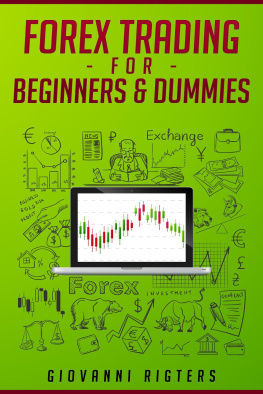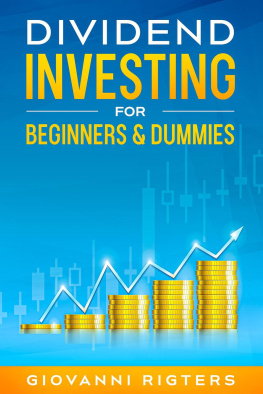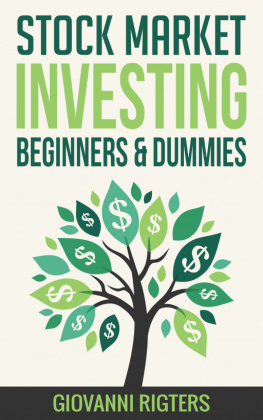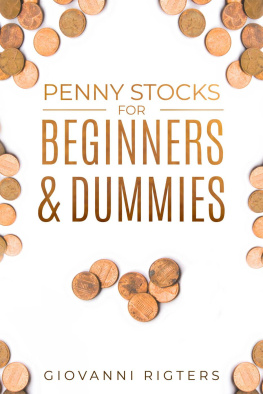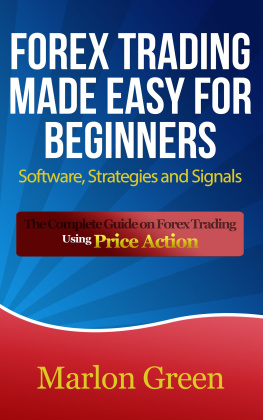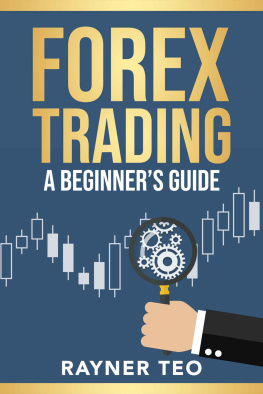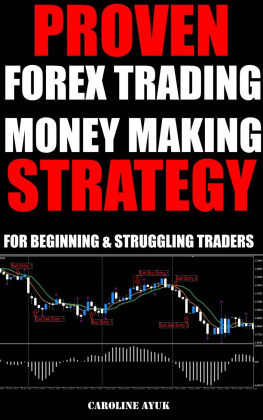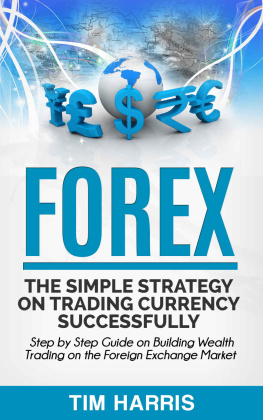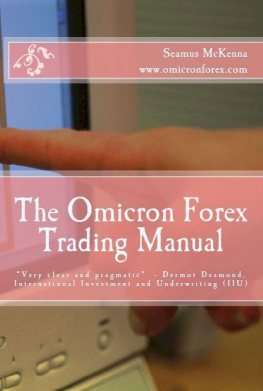Forex Trading for Beginners & Dummies
By Giovanni Rigters
Copyright 2019 by Giovanni Rigters
All rights reserved.
No part of this book may be reproduced in any form or by any electronic or mechanical means including information storage and retrieval systems, without permission in writing from the author. The only exception is by a reviewer, who may quote short excerpts in a review.
Table of Contents
T his book is presented solely for educational and entertainment purposes. The author is not offering it as legal, accounting, financial, investment, or other professional services advice. The content of this book is the sole expression and opinion of its author. It is not a recommendation to purchase or sell equity, stocks or securities of any of the companies or investments herein discussed. The author cannot guarantee the accuracy of the information contained herein. The author shall not be held liable for any physical, psychological, emotional, financial, or commercial damages, including, but not limited to, special, incidental, consequential or other damages. You are responsible for your own choices, actions, and results. Please consult with a competent tax and/or investment professional for investment and tax advice.
D iscover what forex trading is, how to get started in forex trading, and how to make a trading plan. You will learn how to assess your risk and manage it appropriately in the trades you will conduct.
This book is going to teach you the dos and donts of forex, to help you avoid the most common mistakes traders make. Why not learn from experts who have already done things incorrectly? By learning what not to do, you have a leg up against anyone else who tries to enter the forex market without proper knowledge. The difference between profit and loss is always going to be your knowledge of how to invest in the forex market.
Plenty of information is needed to help you understand how the market moves the way it does, who moves the market, and how other investors conduct market analysis. Currencies are going to be explained based on the factors that drive them to move, as well as how to read a currency quote.
The forex market is like the stock market in some respects. You have technical analysis protocols that can help you trade on trends and certain popular patterns like support and resistance. You also have fundamental factors that drive the currencies to change. Important fundamental and technical analysis strategies will be discussed to help you plan and strategize for your entry into the forex market.
Chapter 1: What is Forex?
F orex is the trading of currencies across a foreign market. Forex is short for foreign exchange. This asset class exchanges one country's currency for another, which allows people to use it for a variety of things, but the most common is tourism.
Forex sets a standard rate for exchanging currencies, and this allows people to be protected from fluctuation risks. Seeing as this is a global industry, you have to deal with countries in their native currency. Back before the influx of the internet, currencies were allowed to just float around and fluctuate at will, until investors and banks took interest in it, and set a standard rate of exchange in which to back the currencies off of.
How to Get Started with Forex Trading
G etting started with forex trading requires you to gain knowledge, set up an account, have money to invest, and learn about the currency pairs you want to trade. You will need to build your dedication, resources, discipline, perseverance, decisiveness, and knowledge if you want to become a successful forex trader.
Gaining Information
Knowledge is key to your success. There are two questions every forex trader has to answer:
Why do currencies change the way they do?
How can you profit from that movement?
You are going to learn the answers to both these questions, as you read through this book. For now, to get started, you need to understand that knowledge is the powerful key to trading in the forex market. Without the knowledge of how to trade, how the market works, and the mistakes that can be made, you will not be able to make a profit.
You have already started on this first step of getting started in the forex market. You are learning.
As you gain knowledge, you will need to understand the economic, political and market dynamics. Only when you have this knowledge and understanding, will you be able to experiment with trading strategies, figure out various order positions, and improve your profit margin.
Before you trade with real money, you need to practice what you learn. The goal as you learn is to work towards a profit margin of 90% or higher. At first, you may see a profit margin below 50%, meaning significant losses. By setting up a paper money account, you can avoid real losses.
Set up an Account
Finding a broker is important, so you can set up your account for trading currencies. You want to set up an account that allows you to trade with paper money, as well as trading in real market conditions. Paper money accounts mean there is no risk to your capital until you are satisfied that you are ready to trade with the risk of losing that money.
Accounts will vary concerning what you need to set one up. The brokerage firm will need to verify your identity. You can enter your details online since this is where you will be trading currencies. Make sure all of your information is accurate, including your address, social security number, and personal banking information. The broker will ask for you to verify your information by sending a copy of your driver's license and a form to them.
After the form is received and processed, your account can be used for real money trades. While you wait for your account to be set up for real money trades, you will be able to access the paper money account. It only takes a username and password for paper money software.
Brokers require a specific amount of money to trade because of how the forex market works. There are small batches that some brokers will allow you to trade. A small batch is $1,000 per open order. It means if you wanted to invest in the EUR/USD you would need at least $1,000 to buy or sell the currency. Other brokers require a minimum of $10,000. Some brokers require $100,000 or $1 million. Until you have the money balance the broker requires, you will not be able to trade.
Next page
